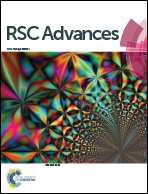Properties of multi-phase foam and its flow behavior in porous media
Abstract
Aqueous foams were produced with partially hydrophobic SiO2 nanoparticles and sodium dodecyl sulfate (SDS) dispersions. The injection behavior of SiO2 stabilized foam (SiO2/SDS foam) was analyzed and compared with SDS stabilized foam (SDS foam). The experimental results showed that the SiO2 nanoparticles and SDS surfactants had a synergistic effect on foam stability at proper SDS concentration. And the effect was accompanied with a slight decrease in foam volume. The adsorption of nanoparticles on the bubble surface was confirmed by laser-induced confocal fluorescence microscopy. And the effect of absorbed nanoparticles on bubble surface viscoelasticity was also verified by the interfacial dilational rheological measurement. The dilational viscoelasticity increased with increasing SiO2 concentration, corresponding to foam stability. The plugging flow experiment demonstrated that the maximum differential pressure in SiO2/SDS foam flooding was 1.9 MPa, much higher than that in SDS foam flooding. The SiO2/SDS foam had better diversion properties and resistance to water flushing than SDS foam. In the oil displacement experiments, SiO2/SDS foam could reduce the residual oil saturation noticeably. The enhanced oil recovery and the final oil recovery could reach to 41.2% and 75.7%, respectively. It was deduced that the enhanced foam stability and dilational viscoelasticity were the main reasons for the effective performance in porous media.


 Please wait while we load your content...
Please wait while we load your content...